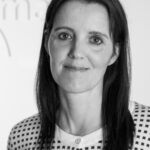Optimization of Icelandic turbot culture / Profitability increase in Icelandic sandeel farming
The main goal of the project "Increasing profitability in Icelandic sandeel farming (MAXIMUS)" was to develop methods to reduce production costs in sandeel farming in Iceland. Sandhverfa is for the most part raised in pots on land and is therefore very suitable for farming in Iceland, in addition to which the market price is high (about 1500 ISK / kg) and stable. Land farming, on the other hand, is costly and therefore new and better technical solutions must be sought to increase the efficiency of farming. The MAXIMUS project worked on the development of a new light cycle control that makes it possible to increase growth by up to 20%. Work was done on the development of new feed types which sought to reduce the weight of sea protein and managed to reduce feed costs by up to 10% compared to conventional feed. This will make it possible to increase the efficiency of aquaculture in the later stages of the aquaculture process. The project also developed a multiplex genetic marker kit for a sandeel that has made it possible to genotype large numbers of juveniles quickly and safely. This genetic marker kit will be used to accelerate genetic progress in sandeel farming in the future. Market research was carried out and an attempt was made to examine the future prospects of the farm. Sandeel production will probably increase considerably in the coming years, but despite an increase in recent years, prices have remained stable. The results of the project strongly indicate that sandeel farming is economical in Iceland and the methods that have been developed in the project will increase the likelihood of development and investment in sandeel farming in Iceland.
The overall aim of this project, MAXIMUS, was to develop methods to significantly reduce production costs in farming of turbot (Scophthalmus maximus). Production of turbot in Iceland has been growing and therefore it is important to develop technology to lower the production costs. Turbot is an ideal species for farming in land ‐ based stations in Iceland, having many good characteristics as an aquaculture species and high (1500 kr / kg) and stable market value. Rearing fish in land ‐ based farms comes however with a cost and it is important to constantly strive to develop new technology to reduce cost of production. Firstly, methods to use photoperiod control to increase growth rate up to 20% compared to traditional methods were developed. Secondly, it was found that crude protein in turbot feed can be reduced by approximately 10% compared to current level in commercial feed without negative effects on growth. This will make production of a more cost efficient and less expensive feed for large turbot possible. Thirdly, multiplex genotyping systems were developed, making it possible to determine the pedigree of the parent fish during breeding to ensure genetic diversity leading to high growth rate. Finally, the current and future developments in turbot production and markets were analyzed. Production of this species is likely to increase considerably in coming years. In addition, there are important developments in technology that may impact on future supply and cost of production. An estimate of the economic implications of optimized turbot farming system in Iceland, profitability and revenue, was also investigated. Overall the results from this project will make turbot production in Iceland more feasible, and profitable, in the future.
Report closed until 01.12.2013

